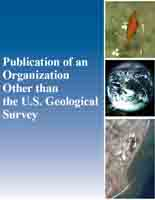Amphibians and reptiles
Links
- More information: Publisher Index Page (via DOI)
- Open Access Version: Publisher Index Page
- Download citation as: RIS | Dublin Core
Abstract
Amphibians and reptiles are a diverse group of ectothermic vertebrates that occupy a variety of habitats in rangelands of North America, from wetlands to the driest deserts. These two classes of vertebrates are often referred to as herpetofauna and are studied under the field of herpetology. In U.S. rangelands, there are approximately 66 species of frogs and toads, 58 salamanders, 98 lizards, 111 snakes, and 27 turtles and tortoises. Herpetofauna tend to be poorly studied compared with other vertebrates, which creates a challenge for biologists and landowners who are trying to manage rangeland activities for this diverse group of animals and their habitats. Degradation of habitats from human land use and alteration of natural processes, like wildfire, are primary threats to herpetofauna populations. Disease, non-native predators, collection for the pet trade, and persecution are also conservation concerns for some species. Properly managed livestock grazing is generally compatible with herpetofauna conservation, and private and public rangelands provide crucial habitat for many species. Climate change also poses a threat to herpetofauna, but we have an incomplete understanding of the potential effects on species. Dispersal and adaptation could provide some capacity for species to persist on rangelands as climates, disturbance regimes, and habitats change. However, inadequate information and considerable uncertainty will make climate mitigation planning difficult for the foreseeable future. Planning for and mitigating effects of climate change, and interactions with other stressors, is an urgent area for research. Maintaining large, heterogeneous land areas as rangelands will certainly be an important part of the conservation strategy for herpetofauna in North America.
| Publication type | Book chapter |
|---|---|
| Publication Subtype | Book Chapter |
| Title | Amphibians and reptiles |
| DOI | 10.1007/978-3-031-34037-6_25 |
| Publication Date | September 02, 2023 |
| Year Published | 2023 |
| Language | English |
| Publisher | Springer |
| Contributing office(s) | Forest and Rangeland Ecosystem Science Center, Western Ecological Research Center |
| Description | 35 p. |
| Larger Work Type | Book |
| Larger Work Subtype | Monograph |
| Larger Work Title | Rangeland wildlife ecology and conservation |
| First page | 861 |
| Last page | 895 |


